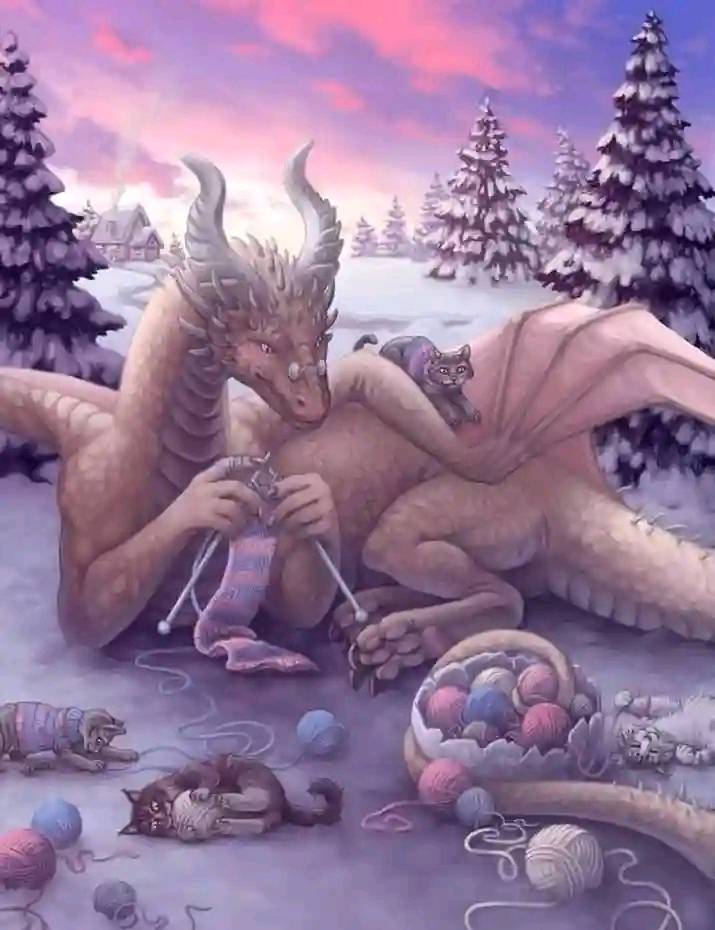Adaptation of a Dragon
In the realm of mythical fantasy, where legends are born and imagination knows no bounds, lived a creature of awe-inspiring majesty—a dragon named Drakon. Drakon was not just any dragon; he was a living embodiment of the fantastical, a creature that symbolized the boundless creativity of the human mind.
As a dragon, Drakon possessed a myriad of remarkable adaptations that set him apart in the world of mythical creatures. His formidable body, massive and powerful, was adapted for a life of both terrestrial and aerial dominance. Scales of the deepest emerald adorned his serpentine form, glistening with an otherworldly luster, an adaptation that acted as natural armor, impervious to most forms of weaponry.
Drakon's adaptability extended to his wings, immense and membranous, capable of supporting his massive frame as he soared through the skies. These wings granted him the gift of flight, an adaptation that allowed him to traverse mountains, oceans, and endless realms. His adaptability in the air was a testament to his control over the very elements of wind and fire, the two forces he harnessed for his flight and fiery breath.
His head, crowned with fearsome horns and adorned with deadly teeth and tusks, was a testament to his adaptability as a predator. His jaws could rend through the toughest of armor, and his fiery breath could reduce stone and steel to molten slag. Drakon's adaptability in combat made him a force to be reckoned with, a symbol of destructive power.
The dragon's eyes, sharp and intelligent, possessed an uncanny ability to see across great distances and through the veil of time. This was an adaptation that allowed Drakon to foresee the movements of those who sought to challenge him. His adaptability in the realm of foresight was the key to his survival and dominance in a world filled with peril.
Drakon's adaptability extended to his lair, a cavernous and treasure-filled sanctuary hidden deep within the heart of a towering mountain. Here, he would hoard the precious gems and artifacts of the realm, an adaptation that was both symbolic of his wealth and his territorial dominance.
The dragon's adaptability also manifested in his affinity for magic. He could manipulate the forces of the arcane, an adaptation that granted him the power to bend reality to his will. His breath, a fiery torrent, could be transformed into a devastating conflagration or a swirling vortex of frost, adapting to the situation at hand. His ability to cast spells and weave enchantments was an unparalleled adaptation that set him apart in the world of mythical creatures.
Drakon's adaptability was further demonstrated in his role as guardian of ancient knowledge and wisdom. He had adapted to become a repository of the world's secrets, a keeper of forgotten lore. Those who sought his counsel would often bring offerings in exchange for the dragon's adaptability in revealing the hidden truths of the world.
The changing seasons of the mythical realm tested Drakon's adaptability. In the harsh winters, when the snow blanketed his mountainous abode, he would retreat to his cavern, entering a deep slumber to conserve his energy. His adaptability in hibernation allowed him to endure the long, cold months until the return of spring.
As a solitary creature, Drakon's adaptability extended to his role as a solitary guardian. He was a symbol of awe and fear, a being to be respected and revered. The villagers who dwelled in the shadow of his mountain would offer sacrifices to appease him, an adaptation that ensured their safety and the dragon's own peace.
Drakon's existence was a testament to the boundless imagination of humanity, a creature conjured from the depths of legend and myth. His adaptability in his multifaceted roles, as guardian, hoarder, seer, and warrior, painted a portrait of a creature beyond the confines of reality. In the realm of mythical fantasy, where dreams and stories collide, Drakon stood as a magnificent symbol of the human capacity to create and adapt, to give life to the extraordinary in the realm of imagination.


